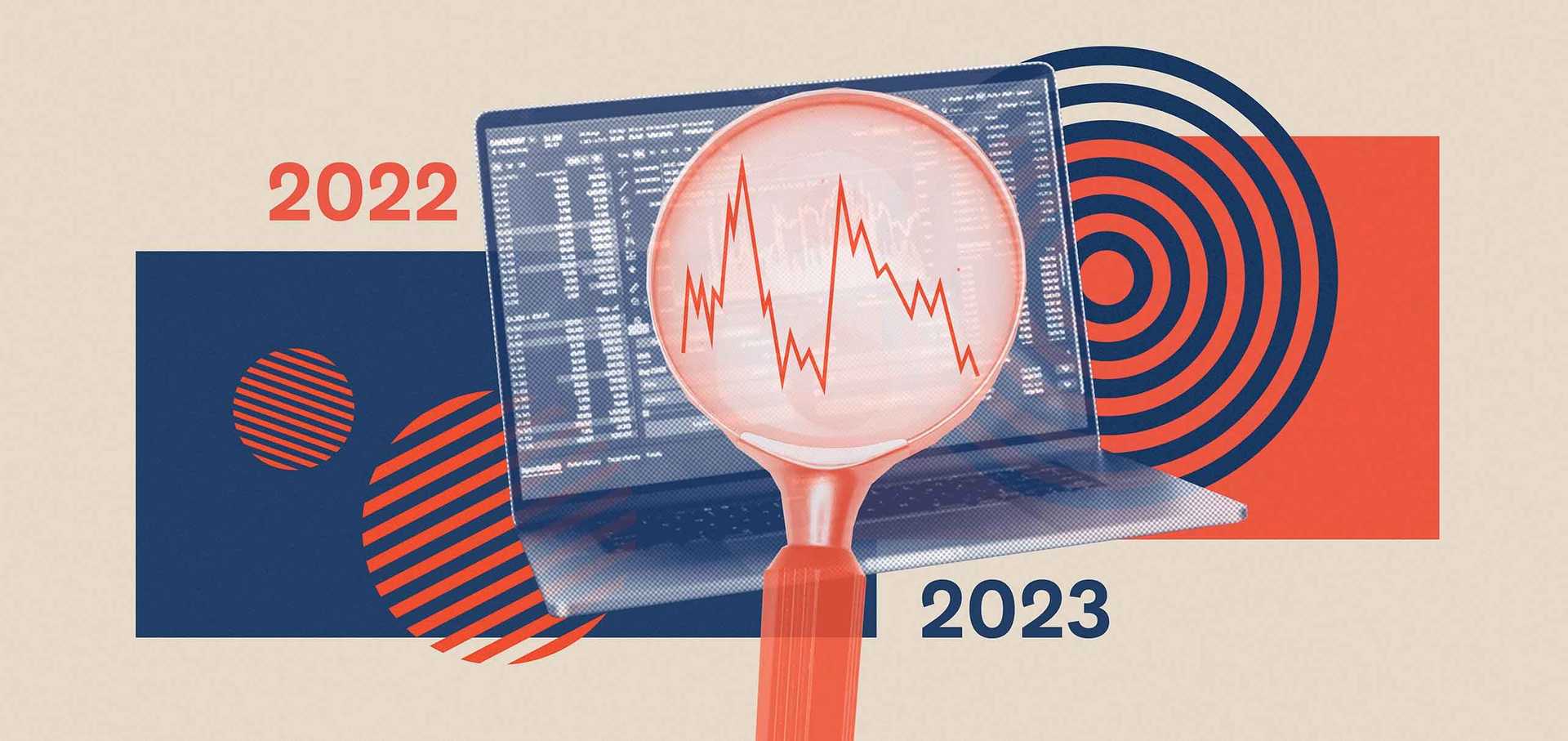One of the most fun carols to sing along to at Christmas is “The 12 Days of Christmas”. First published in an illustrated children’s book, Mirth Without Mischief, in London in 1780, it has been popular ever since. There have been small variations to the words, but they are all basically the same:
On the twelfth day of Christmas,
my true love sent to me
Twelve drummers drumming,
Eleven pipers piping,
Ten lords a-leaping,
Nine ladies dancing,
Eight maids a-milking,
Seven swans a-swimming,
Six geese a-laying,
Five gold rings,
Four calling birds,
Three French hens,
Two turtle doves,
And a partridge in a pear tree!
But what has this got to do with margin? Well, with a few leaps of imagination, it can be used to describe the margin related events that we have observed in the markets this year.
Twelve Drummers Drumming
2023 has seen many CCPs drumming up support for their new margin methodologies, or making improvements to their existing algorithms. They have also been adding to their services to encourage clearing of more trades. In the bilateral world, changes have included updates to the SIMM methodology used in UMR as well as the broker PB algorithms.
Many of these changes happened over the summer holidays meaning a lot of preparation for firms to make sure they were ready for the updates. This highlighted the importance of having the correct solution in place that can support the changes, and also the impact of trading new markets.
So who were the top “12 drummers drumming”?
- Over the summer, CME moved the first of their markets (energy) from SPAN to SPAN 2.
- JSCC recently implemented their own upgrade from SPAN to VaR.
- Meanwhile, ICE is well underway with their upgrade from IRM 1 to IRM 2, with ICE US equities already live and energy markets to follow soon.
- Eurex updated their Pairs algorithm to remove subsampling – a simplification that brought it more in line with other methodologies.
- Euronext Clearing went live with their new VaR based methodology for the Italian market, with plans well advanced to move the other Euronext derivatives markets from LCH SA to Euronext Clearing in Q3 2024.
- LCH SA merged their RepoClear Euro debt service with their general collateral €GCPlus service, introducing the operational and netting benefits of a single margin call across the two business lines, which means that the €GCPlus has now moved to a VaR based margin calculation.
- FICC and CME are about to enhance their cross margin arrangements to include CME Fixed Income futures alongside FICC cleared US Treasury notes, bonds and Repo transactions, increasing the number of products that can take advantage of these offsets.
- LCH worked with Quantile to deliver FX Smart Clearing – an optimiser that finds the most capital efficient combination of cleared and uncleared FX trades, finding the right balance between margin levels and capital costs.
- LME Clear made changes to their default fund calculation to ensure the correct balance between mutualised risk in the form of default fund and demutualised risk in the form of initial and additional margin.
- The EU Pension Fund exemption expired meaning pension funds are now having to source additional collateral to cover margin requirements
- European policymakers voted in favour of the draft Emir 3.0 rules that will require all participants to hold active accounts at European CCPs. The intention is to encourage more clearing in Europe and drive business away from the City of London.
ISDA announced that they were moving to 6 monthly updates to their SIMM algorithm – used to calculate margin for UMR. They also implemented the first off-cycle update with SIMM 2.5A.
Eleven Pipers Piping
The eleven pipers may be piping, but for various reasons there has been less oil flowing in the pipes of the world. These supply shortages have continued to cause volatility in oil prices and subsequent changes in margin requirements. The margin calls haven’t been as large as they were last year, but firms have been using the relative quiet to consider how to deal with the liquidity problem in the oil markets and the tools that they should put in place to help them weather the next storm.
Those firms that have looked in depth at the problem have realised that being able to predict margin requirements and the impact on liquidity is harder than you might think, with many factors affecting the calculations. This is particularly true for the oil market where the complexity of the available products makes the impact of a trading strategy on margin levels can be very unpredictable. We considered this by looking at how SPAN treats oil strategies within the algorithm.
Ten Lords A-leaping
It’s not just the lords that have been leaping. Prices have continued their leaps and bounds, particularly in the energy markets. Although not as extreme as the moves seen in 2022, the market volatility has continued to result in large margin calls, with firms worrying about how to fund these. Along with our friends at Baringa, we looked at the best way to manage liquidity risk.
One of the ways to optimise margin requirements is to look at alternative products, for example trading an equivalent product at an alternative exchange. One of the options we looked at in detail was the impact on margin for natural gas trading from moving from ETD to OTC.
Nine Ladies Dancing
Prices might be leaping, but that’s not the only reason that margins might be dancing. Sometimes it is just the way that the margin algorithms work and how they react to changes in a portfolio over time, for example when contracts expire. We looked at some of the reasons for sudden changes in power and gas margin. The examples here were particularly for the European markets, but we also considered the same for the Australian markets where there are differences in the way that margins are set for different products.
There can be other reasons why margin might change unexpectedly. Some of these are related to the way that offsets between different products are included within any margin algorithm, and can result in sudden changes in requirements. We looked at one particular example where
the update to dated Brent pricing might impact WTI and Brent margin. We also considered how the way that margin parameters are defined can impact the volatility of margin requirements, including the example of the Australian power markets.
Eight Maids a Milking
La Niña in English is the girl or maid, as well as a weather system that causes lower than expected temperatures. That’s the opposite of El Niño or boy, the weather system that is currently adding to the higher temperatures that have already been seen due to global warming. In fact 2023 is forecast to be the warmest year since records began.
As an example, Brazil experienced record temperatures with more than a hundred million people being affected by the heat. This has been attributed to a combination of the El Niño phenomenon and climate change.
We’ve written recently about the impact on margin requirements of El Niño and expect this to continue as the effects take hold. We’ve also considered the impact of weather on EU and US power and gas. These markets had already been volatile following the Russian invasion of Ukraine, but unpredictable weather has been making it difficult to predict margin levels.
And global warming means firms are needing to consider their carbon footprint. And this trading activity, with firms trying to meet their carbon targets, will have an impact on margin.
Seven Swans A-swimming
When thinking of seven swans a-swimming people usually imagine them swimming on a lake but they could be making their way down rivers or across the oceans. Much in the same way as freight is used to transport goods.
A mixture of fuel costs, difficult economic conditions and unusual weather have all had an impact on the cost of freight. We looked at how this volatility was impacting margin requirements as well as some of the innovations taking place in the industry to address these challenges.
Five Gold Rings
Gold prices have been relatively stable this year, and this has been reflected in margins.
However, the same is not necessarily true for other metals. Nickel as an example has halved in price during 2023, and is now only a third of the price that it hit during the crisis in March 2022. Meanwhile, although not as dramatic, other metal prices have also fallen, including copper which after a spike at the beginning of the year has fallen back to earlier levels.
This reduction in both prices and volatility has been reflected in margin requirements. On the LME, whilst margin levels for copper have fallen by just under 20%, nickel margins are now over 40% lower than they were at the beginning of the year.
Last year we looked at how the metal markets are changing, in particular the updates in both the initial and variation margin calculations that are expected at the LME. These have both been delayed whilst the exchange put in place processes and procedures to prevent another price and liquidity based crisis, but they can be expected to start looking at them again in 2024.
Six Geese A-Laying
Christmas wouldn’t be Christmas without cake, and in particular a chocolate yule log. Along with the eggs (that the geese have been a-laying), it also needs sugar, cocoa and wheat (to make the flour).
All of these commodities have had reasons to be volatile over the past year. With Ukraine still at war with Russia there are limits to European wheat supplies. And recent rises in cocoa and coffee prices have not just meant it’s more expensive to make cakes, but has also had an impact on margin requirements.
Four Calling Birds
Or four long call options, a few puts and some offsetting futures. Most portfolios are made up of a combination of different trade types and expiries. And this can make it very difficult to estimate margin requirements.
The way that different expiries and products interact within a portfolio based margin algorithm can be very difficult to predict. With SPAN it can feel as though you can estimate what the impact is going to be because of the published parameters, whereas with a VaR based algorithm the offsets are inherent within the scenarios and therefore much harder to predict.
Just knowing how to identify the different trades within a portfolio can be difficult. For an ETD trade you have to understand the correct contract code to use, how to identify the contract type and then the expiry date to use. We looked at why understanding expiry is important when calculating margin – get it wrong and you can end up on the end of a much larger than expected margin call.
Three French Hens
We might not have considered french hens in any of our analysis but we have looked at issues in the french nuclear power market and the impact on margin. And this isn’t the only power market where a mixture of local and international events can affect prices and therefore requirements.
We also looked at other power markets and how different factors can impact margin requirements. One area we considered was why margin parameters are set differently for different products in the Australian power market.
Two Turtle Doves
Alongside the doves maybe we should throw in some hawks, which will make up a central bank rate setting committee. With the high levels of inflation that have been seen around the world as a result of, amongst other things,volatility in oil prices, central banks have been increasing interest rates in an attempt to control it. These rising interest rates have led to increases in the margin requirements on fixed income products – something that participants in these markets are not used to.
This increased volatility came at the same time as the end of the European exemption from clearing for pension funds, with firms struggling to find clearers or having to limit their trading because of the caps placed on their business. We considered the impact on margin of these changes in regulations, many of which were first mooted following Lehman’s failure 15 years ago.
A Partridge in a Pear Tree
According to academics, the partridge in a pear tree represents a forecast of things to come. And apparently if you consider the full 12 days of Christmas you can predict forthcoming events based on whether the sun shines or not on a particular day. For example, sunshine on day 4 means stores of gold will increase. Meanwhile, sunshine on days 5, 6 or 7 will all influence the production of agricultural products. Sunshine on day 12 should bring about world peace, although that sadly looks unlikely given the current geopolitical situation.
This time last year we made our own predictions. We were expecting 2023 to be the year when liquidity issues came to the fore, with firms taking the opportunity to improve their systems and protect themselves against any further liquidity squeezes. This has definitely been seen amongst our clients and prospects. They are looking to enhance their solutions to improve their liquidity planning, including adding the ability for stress testing and the calculation of Cash Flow at Risk.
2023 has been a relatively calm year. But the geopolitical situation is not getting any better, with Russia still at war with Ukraine and now the conflict between Israel and Palestine causing tension in the Middle East. And this year’s COP conference has not been without controversy, with the chairman being accused of being briefed to use his position to further oil deals. 2024 could be a choppy ride.




